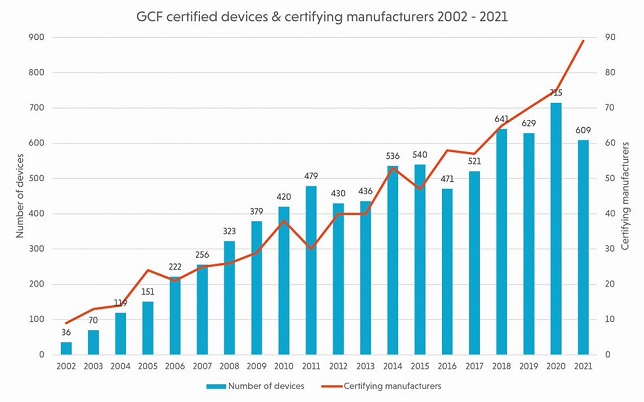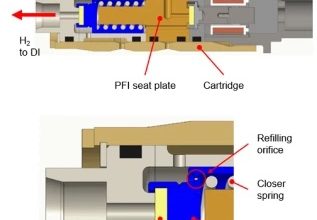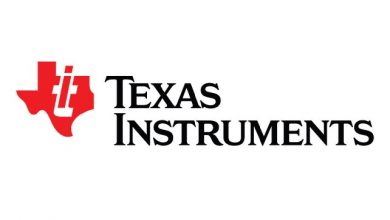GCF Mobile Device Trends report details continuing growth of 5G and SA support

The Global Certification Forum (GCF) published its annual Mobile Device Trends report, which includes an analysis of wireless device certification data for 2021 and the first quarter of 2022. The report highlights the continuing rapid migration to 5G, with over 30% of all devices in 2021 integrating the technology, and the increase in support for 5G standalone (SA) operation, which is approaching 90% of 5G devices. However, having initially outpaced LTE in terms of its proportion of all devices, 5G has fallen behind in the third year of its deployment.
GCF, as the globally recognised quality mark for the interoperability of mobile phones and other devices that incorporate mobile connectivity, is well-placed to monitor and comment on the adoption of technologies in the sector. Over 150 device manufacturers across 25 countries are currently participating in GCF and the certification programmes are recognised by network operators with interests in global markets. The analysis of GCF certifications provides insights into the mobile technologies and functionalities being requested by operators and end users across markets worldwide.
A total of 609 device models from 89 manufacturers were certified by GCF in 2021. While this was a record number of manufacturers certifying – an increase of over 18% from the 75 in 2020 – the number of devices certified fell nearly 15% from the level achieved the previous year. One reason for this decline was the continuing shift towards 5G: in 2020, many smartphones were produced (and certified) in separate 4G and 5G model variants whereas in 2021 more models came in a single 5G version. There was also an impact from the worldwide chip shortage, which caused problems across many industries.
The integration of 5G into devices has continued to increase rapidly but, after an initial burst in 2020, the proportion of new devices incorporating 5G has fallen behind the level for LTE at the equivalent point in its lifecycle. 31% of all devices certified in 2021 integrated 5G (compared with 21% in 2020). Among these, there was a significant jump in the proportion supporting 5G standalone (SA) operation. 65% of the 5G devices certified in 2021 (123 of 189) supported 5G SA, up from 34% in 2020. This rate continues to grow and, in 2022 year-to-date, the proportion of 5G devices supporting 5G SA is 88%.
Smartphones remained the largest category of device in 2021 (43%) with modules in second place at nearly 30% (up more than three percentage points on 2020). The third largest category in 2021 was WLAN routers, which made up 8% of devices certified. This was a considerable jump from 2020 and was largely due to operators supporting fixed 5G wireless access on their 5G networks, which drove up the demand for WLAN routers. In 2022 so far, the top three device categories remain the same but the proportion of WLAN routers has declined, possibly because their longer lifecycle means that fewer new models need to be certified.
Of the two dominant cellular IoT standards, the number of NB-IoT devices certified continued to grow strongly, rising 16% to 65; LTE CAT M1 (FDD) remained close to its 2020 level, which was more that 70% higher than 2019.
GCF’s Mobile Device Trends report contains detailed figures and analysis on a wide range of emerging and legacy technologies including 5G, LTE, cellular IoT, eSIM, oneM2M, LTE, 3G and GSM.





